
FT 137. Photo Michel Lechien
Rich and varied
The motifs that decorate Coptic textiles represent an iconographic repertoire that is especially rich and varied, closely linked to that of painting and mosaics or even architectural ornamentation. Generally the various designs are distributed symmetrically on the textiles.
Classical culture
Although the Copts were converted to Christianity very early on, their use of the themes and symbols of this religion in textiles was rather minor. On the whole, Coptic art is heavily imbued with classical culture. The Fill-Trevisiol collection contains only one fragment on which there is an ansate cross. “It is still a heritage of the Pharaonic era” says Florence Calament, Curator at the Department of Egyptian Antiquities of the Louvre Museum. “The ankh sign, which is the symbol for life, passed into the Christian repertoire to symbolise the cross of Christ and faith in eternal life that is associated with it.” It is worth noting that the collection contains several pieces showing a Greek cross, but represented rather discreetly.
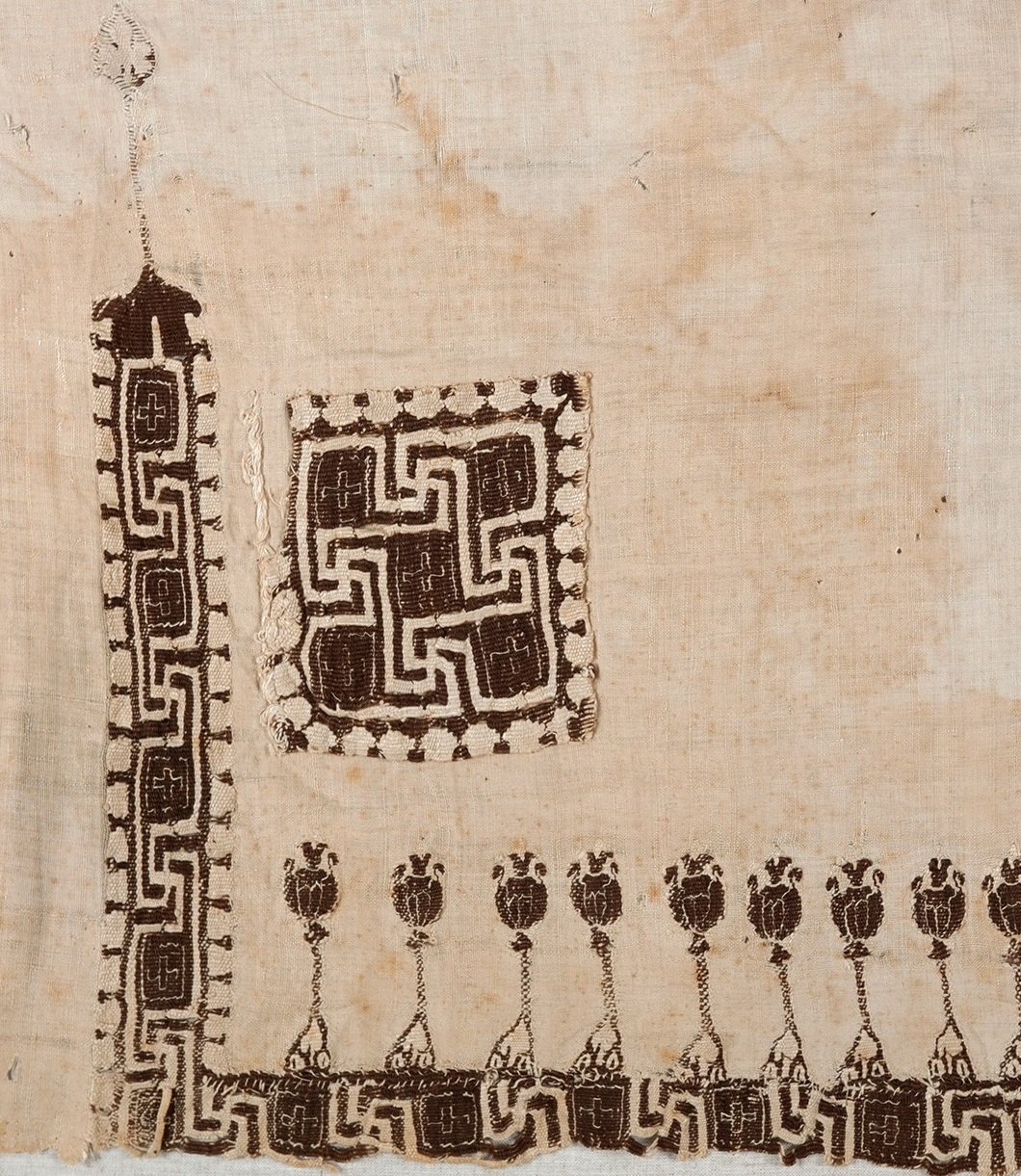
FT 177. Photo Michel Lechien
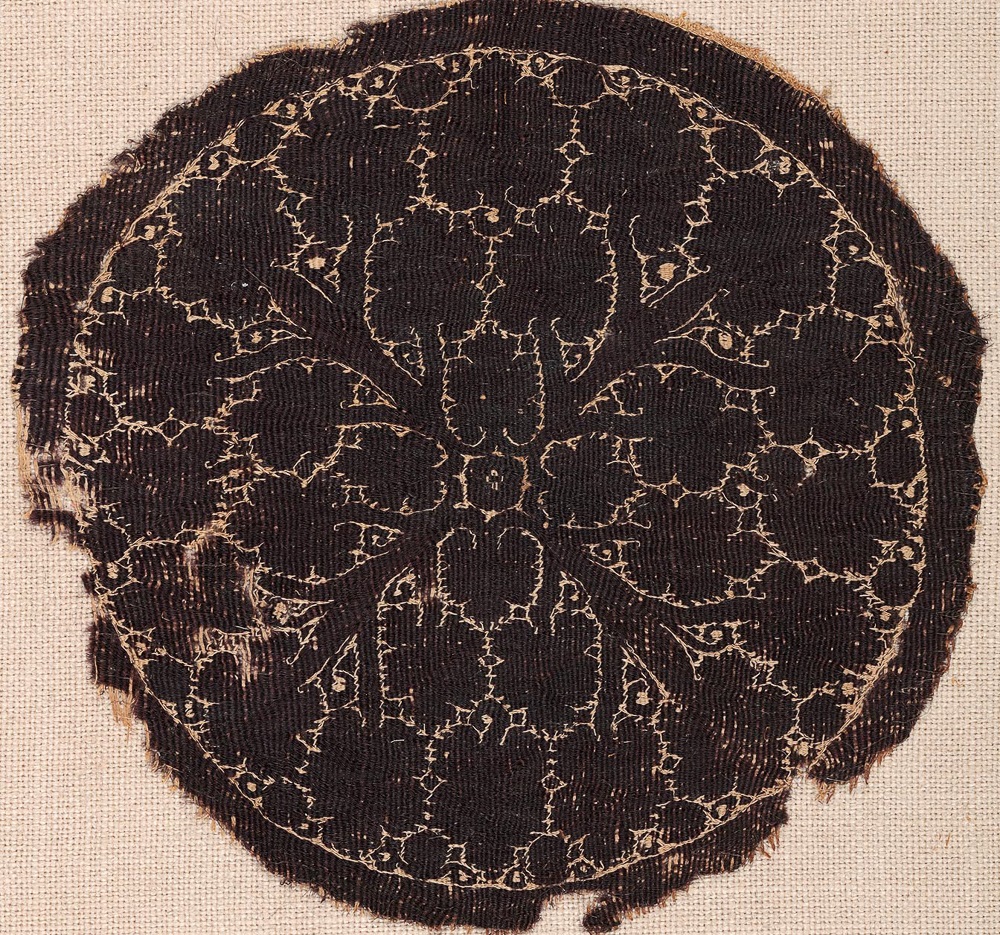
FT 37. Photo Michel Lechien
Animals and plants
The plant kingdom provides an inexhaustible source of inspiration, whether it is treated in a relatively natural manner or firmly stylized. Amongst the most frequently represented plants are the vine, the lotus flower and pomegranates. Leaves and flowers can form crowns, as a victory symbol borrowed from classical art. Motifs of baskets and bowls filled with fruit also appear.
Coptic textiles are full of animals too, sometimes faithfully represented, but at other times in a very schematised manner. Cockerels and peacocks, eagles, fishes and dauphins, wild animals, deer, hares, dogs and dromedaries are often scattered or lined up in a scroll, referred to as being ‘inhabited’. Also very characteristic are the so-called Nilotic scenes, which celebrate the flooding of the Nile, as well as ducks, fish, turtles and sometimes jellyfish or even shells.
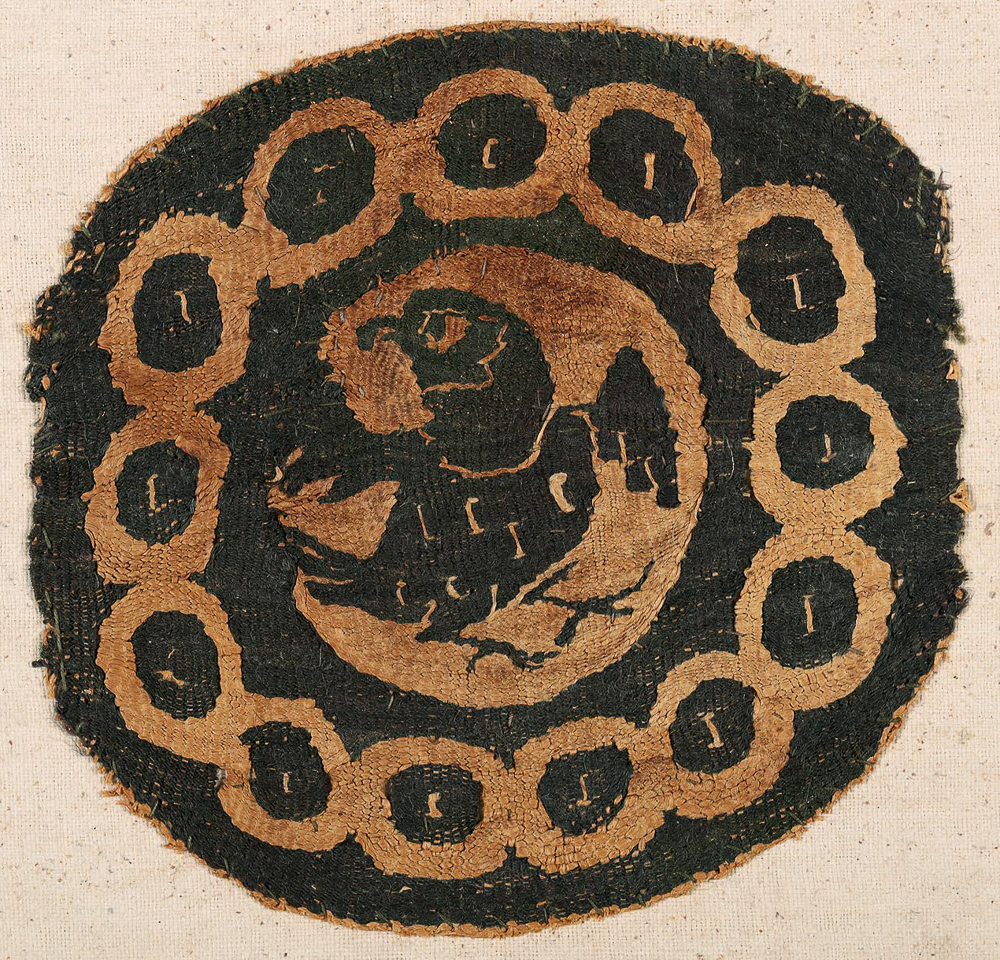
FT 31. Photo Michel Lechien
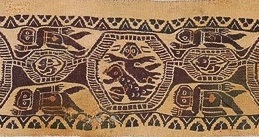
FT 200. Photo Michel Lechien
Mythological figures and characters
In the Greco-Roman tradition, which was totally assimilated by the Copts, we find innumerable representations of heroes and divinities or mythological figures, including Heracles/Hercules, Achilles, Dionysus/Bacchus, Aphrodite/Venus, as well as Nereids (sea nymphs), mermaids and centaurs.
Amongst the mortal figures in the textiles are dancers, often shown in a frieze or as part of a Dionysian thiasus or cortege, as well as hunters, symbolising the victory of human strength over the animal world. However, it is the theme of the Greek warrior, nude and armed with a shield that we see most frequently, as well as the horseman, alone or in a group.
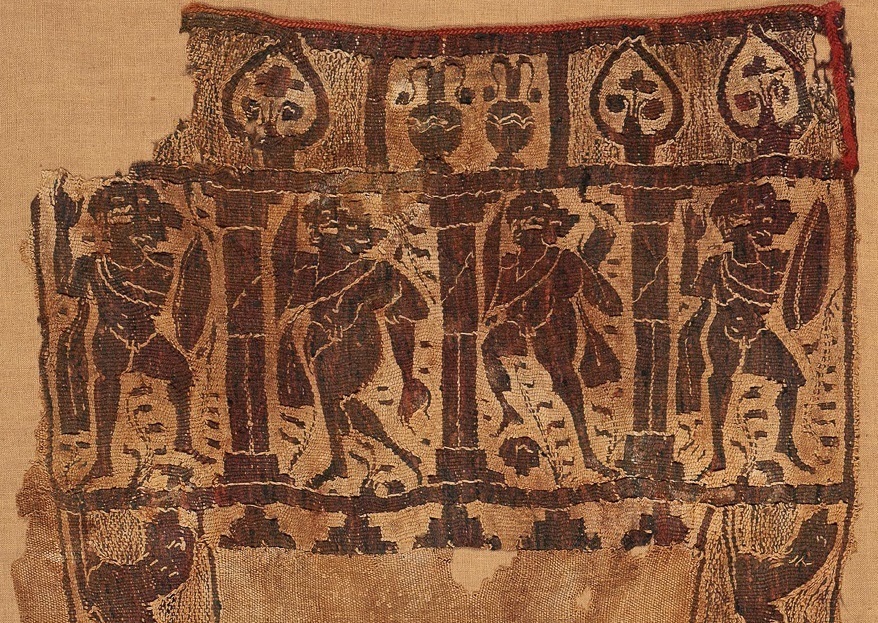
FT 6. Photo Michel Lechien
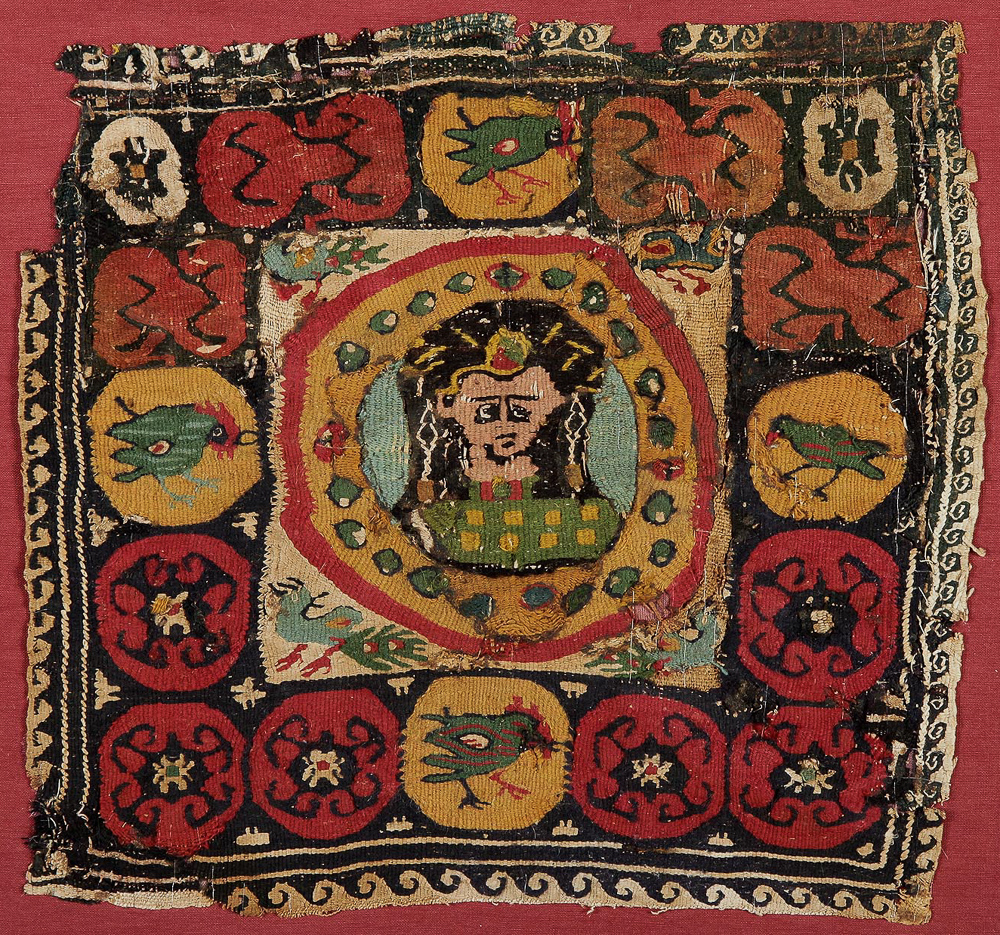
FT 153. Photo Michel Lechien
Adapted from the Imperial or Byzantine repertoire, the bust portraits can present a natural style, with colour shades, or a deconstruction of volumes and extreme schematisation. “Often, the attributes that accompany these busts are difficult to see and this hinders identification”, says Florence Calament. “They could be simple representations, without any particular meaning, or they might also be allegories, of seasons for instance.”